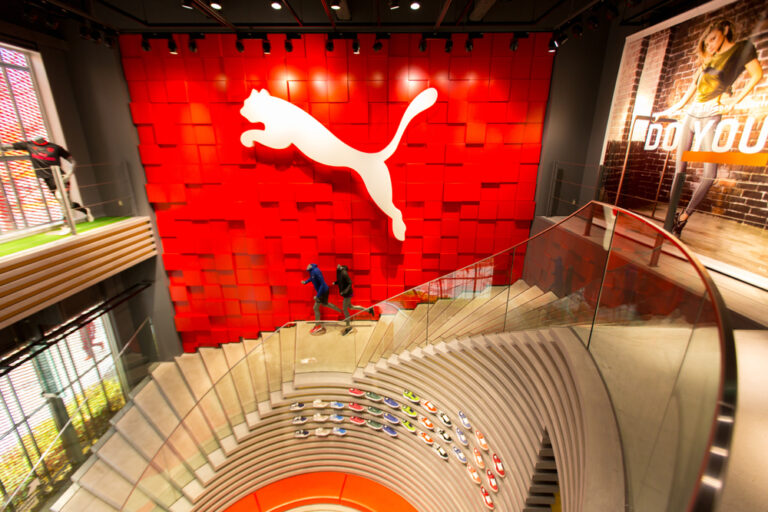In the relentless world of global sports and fashion, a brand’s ability to adapt is not merely an advantage—it is a condition of existence. While most companies tread cautiously, especially with major events like the Paris Olympics, Euro 2024, and Copa América approaching, one brand stands apart with a daring, transformative bet. Puma, rather than relying on its established name, is executing a calculated and comprehensive marketing transformation aimed directly at the next generation of consumers. This is more than a new campaign; it is a fundamental repositioning, a powerful case study in how a legacy brand can rebuild its foundation for a new era.
The core of this strategy is a deliberate organizational restructuring designed to maximize agility and impact. Puma’s marketing function has been consolidated, relocating from Boston to its global headquarters in Herzogenaurach, Germany. This is not a bureaucratic decision. It is a strategic move to create tighter integration between marketing and other core business units. When the marketing team works in direct proximity to product developers and sales strategists, the result is a more cohesive and potent brand message. This relocation signals a commitment to a leaner, more responsive operational model. The leadership change, with Richard Teyssier stepping in as the new Global Brand & Marketing Director, underscores this intent, demonstrating the company’s confidence in a leader who understands the brand’s heritage while possessing a clear vision for its future.
A critical component of this overhaul is a complete reevaluation of how Puma allocates its marketing resources. The conventional playbook dictates spreading a marketing budget across numerous small activations—a scattershot approach that often leads to minimal, fragmented returns. Under Teyssier’s guidance, Puma is abandoning this model. The brand is now investing a larger overall budget but focusing it on fewer, higher-impact campaigns. This is a crucial lesson for any business leader. In a digital landscape saturated with noise, being everywhere often means being remembered nowhere.
Puma is now deliberately choosing its battles. By concentrating resources on a select group of high-profile activations, they can create campaigns that are impossible to disregard. This strategy isn’t about doing more; it’s about doing what truly matters. It permits a deeper, more meaningful connection with the target audience and a greater return on every dollar spent. This is a bold departure from the old wisdom that more is always better. It proves a sophisticated understanding that genuine influence stems not from omnipresence, but from a calculated, unforgettable presence in the right places at the right time.
This refined Puma marketing strategy Gen Z focus on quality over quantity has led to a significant increase in their marketing spend, with reports indicating a 40% rise over 2024 levels to support its new brand positioning and largest global campaign to date. This shows a brand willing to invest heavily in its new vision, not just talk about it.
The central objective of Puma’s new strategy is to capture the attention of Gen Z, and not just to appeal to a new demographic, but to secure the brand’s long-term future. Now a powerful segment of the global consumer base, Gen Z has a distinct set of values and behaviors. They demand authenticity, transparency, and a brand purpose that extends beyond product sales. Simply telling them what to buy is a failed approach. Brands must meet them where they are—on the platforms they use, speaking a language they understand.
Puma’s new approach is rooted in this principle. While traditional marketing may have relied on broad, one-size-fits-all messaging, Puma’s strategy is inherently audience-centric. They are heavily utilizing digital channels, including social media platforms, strategic partnerships with cultural influencers, and creating content that genuinely resonates with Gen Z’s interests. This is not just a tactical adjustment; it is a fundamental shift. Instead of broadcasting a message, Puma is entering a conversation. Their brand’s progressive image naturally aligns with Gen Z’s values, fostering an authentic connection rather than a manufactured one. The brand has also demonstrated a deep understanding of the “influencer” landscape, moving beyond broad celebrity endorsements. Their strategy now focuses on building relationships with cultural tastemakers—stylists, editors, and creators who shape what’s cool before it becomes mainstream. By seeding products to these “micro-influencers,” they build organic hype and credibility, proving that their products are desirable before they ever hit the shelves
The “Forever Faster” campaign is a prime example of this new strategic direction in action. The campaign transcends the typical focus on athletic performance, connecting the concept of speed not just to a physical attribute, but to a mindset of personal potential and achievement. Featuring world-class athletes like Mondo Duplantis, Karsten Warholm, Neymar Jr., and Breanna Stewart, the campaign positions these figures not just as champions but as exemplars of a particular ethos.
By linking its products to a deeper, more meaningful narrative—one of self-improvement and aspirational excellence—Puma is building a brand affinity that goes beyond a simple transaction. This is a powerful and persuasive form of marketing. It recognizes that consumers, especially Gen Z, are not just buying a product; they are buying into a lifestyle, an idea, a community. This is a masterclass in modern branding: you don’t sell a shoe, you sell the spirit of an athlete. You sell the courage to be “Forever Faster.”
The campaign’s success is a testament to this approach. It has been strategically deployed across a wide range of channels, from out-of-home advertising to digital platforms, to ensure it reaches its target audience where they are. The focus on platforms like TikTok and strategic partnerships with content creators has been particularly effective in resonating with Gen Z, reinforcing the brand’s relevance in the digital sphere.
Puma’s strategic transformation is a courageous move in a hyper-competitive market. Its long-term success will hinge on its ability to execute impactful campaigns that resonate deeply with its target audience. This case study offers profound lessons for any business leader. It confirms that strategic realignment, a disciplined approach to spending, and a clear focus on the right audience are not merely good ideas—they are essential for growth.
The Puma marketing strategy Gen Z proves that in marketing, doing what matters is far more important than doing more. It’s about making a deliberate choice to focus your resources, structure your teams for success, and build a brand message that connects with the people who matter most to your future. Your brand may not be a global athletic giant, but the principles of effective marketing remain the same: clarity of vision, discipline of execution, and an unwavering commitment to your audience. The time for a new playbook is now.
Ready to Redefine Your Brand?
The Puma case study is a valuable lesson for any business looking to connect more effectively with its audience. If you’re ready to redefine your digital strategy, sharpen your brand message, and capture the attention of a new generation of consumers, I’m here to help. I specialize in creating strategic, results-driven marketing plans that deliver real growth.
Contact me today to discuss how we can work together to achieve your business goals.
Gen Z represents a massive and influential consumer base that will shape the market for decades. By establishing a strong connection with them now, Puma is building long-term brand loyalty and securing future market share.
Puma is shifting from a fragmented approach to a more focused one. They are dedicating a larger overall budget to a select few high-impact campaigns rather than spreading a smaller budget across many activations.
Moving the team to the German headquarters fosters tighter collaboration with other key departments like product development and sales. This move streamlines decision-making and ensures a more cohesive brand message across all channels.
The campaign connects the idea of speed and athletic performance with a mindset of personal potential and self-improvement. It’s designed to connect with the audience on an emotional level that goes beyond the functionality of athletic gear.
Major events like the Olympics and Euro 2024 provide a massive global stage. Puma’s new strategy allows them to concentrate their marketing efforts on these moments to gain maximum visibility and relevance.
Digital channels, including social media and influencer partnerships, are central to the new strategy. They are the primary platforms where Gen Z engages with brands and consumes content, making them essential for reaching the target audience.
How to Create a full-funnel PPC Marketing Strategy
The marketing funnel is a cornerstone concept. It’s not just a visualization tool; it’s a strategic roadmap for success. And

How to Create a full-funnel PPC Marketing Strategy
The marketing funnel is a cornerstone concept. It’s not just a visualization tool; it’s a strategic roadmap for success. And when it comes to PPC, where every penny counts, a well-defined funnel is the difference between stagnant campaigns and explosive growth.
This article breaks down the full-funnel PPC strategy you need to dominate your market. We’ll walk you through each stage, from initial brand awareness to conversion, and show you how to leverage PPC to its full potential.
The Marketing Funnel: A Quick Recap
The marketing funnel simplifies the customer journey towards a purchase. Here’s a breakdown of the key stages:
- Awareness: This is where potential customers first encounter your brand. They might see your ads but haven’t actively researched your product or service yet. Think of it as planting the seeds of brand recognition.
- Consideration: Now, they have a need and are actively looking for solutions. This is where you provide informative content to establish yourself as a trusted authority in the space.
- Conversion: This is the golden stage: the purchase decision. Make it easy for them to find you with targeted campaigns and persuasive CTAs.
PPC for Every Stage: Building Your Funnel Strategy
1. Top-of-Funnel PPC: Awareness Campaigns
Don’t underestimate the top of the funnel! Even if someone isn’t ready to buy today, they might be tomorrow. Brand awareness campaigns using display, video, and discovery campaigns ensure you’re on their radar when they start researching.
2. Middle-of-Funnel PPC: Consideration Campaigns
Now that they’re aware, provide valuable content to help them make informed decisions. Use search campaigns (targeting relevant keywords) and informative video or display campaigns (with refined targeting) to position yourself as the solution they need.
3. Bottom-of-Funnel PPC: Conversion Campaigns
The moment of truth. Make yourself the easiest choice with branded search campaigns, shopping campaigns, and remarketing to keep your brand at the forefront of their mind.
Small Budget? Prioritize, But Don’t Neglect Growth
Yes, you can start with a limited budget. But here’s a crucial point: prioritize the bottom of the funnel initially, not as a long-term strategy.
Focus on maximizing conversions, then gradually expand your reach with middle and top-of-funnel campaigns as your budget grows. This approach can give you a quick revenue boost, but it has limitations.
Why Full-Funnel PPC Wins Every Time
Let’s illustrate with an example. Imagine you get 100 customers converting at $10,000 each, resulting in $50,000 monthly revenue. Optimizing the bottom of the funnel might increase your conversion rate to 10% ($100,000 in revenue). Great, right?
But that’s a short-term win. You’re not growing the pool of potential customers. A full-funnel strategy addresses this.
Imagine top and middle-of-funnel campaigns doubled your potential customers to 200. Even with a 10% conversion rate, that’s $200,000 in revenue – with the potential for continuous growth!
The Power of Guiding Your Audience
A full-funnel PPC strategy takes effort, but the rewards are substantial. By guiding potential customers through every stage of the buying journey, you nurture leads, build brand loyalty, and achieve sustainable, scalable growth. Display, video, search, shopping, and remarketing all play a role – tailor your approach to maximize impact at each stage.
Build a rock-solid full-funnel PPC foundation, and watch your business soar.
While you’ll initially see a revenue bump with this strategy, long-term growth is hard because you’re not trying to grow the real number that matters strategically, which is the number of people at the bottom of the funnel. If you don’t grow the number of people looking to convert, it gets harder and harder to grow the business.
Now, let’s run the math on what a full-funnel strategy can do:
Same example as before: 100 customers at the conversion stage, 5% conversion rate at $10,000 per purchase. Adding bottom-of-the-funnel advertising can help boost the conversion rate from 5% to 10% (ideally), but what if top and middle funnel grew the number of potential customers from 100 to 200?
200 customers x 10% conversion rate = 20 conversions at $10,000 per purchase. That’s $200,000 in revenue, with the potential to continually grow the number of customers in your target market.
While this example is obviously a best-case scenario, it’s all to illustrate the point that while targeting the bottom of the funnel is good, implementing a full-funnel strategy, where you take customers from awareness to consideration to conversion, is the best and most consistent way to achieve long-term growth in paid advertising.
Crafting awareness, consideration, and conversion-focused PPC campaigns
Implementing a strategic full-funnel approach to your PPC campaigns takes more initial effort but pays dividends through continual, scalable growth over chasing short-term profits.
By guiding potential customers from initial awareness through consideration and onto conversion, you increase lead volume and gain momentum.
Display, video, search, shopping, and remarketing play distinct roles across the funnel. Evaluate your business’s current customer volume and conversion rates to prioritize budget and resources.
With the proper full-funnel PPC foundation supporting your efforts, you enable the revenue growth your business needs to thrive.
Article adapted from Search Engine Land
Digital IMC – The Perfect Blend for Results in 2024
Table of contents: The rise of the digital maestro A symphony of Success Reaching the right audience Building brand recognition

Digital IMC – The Perfect Blend for Results in 2024
Table of contents:
- The rise of the digital maestro
- A symphony of Success
- Reaching the right audience
- Building brand recognition in the digital age
- Data drives decision
In today’s marketing world, a successful strategy requires a powerful combination: Integrated Marketing Communication (IMC) and digital marketing. Think of IMC as the conductor of an orchestra, bringing together various marketing channels like advertising and PR to deliver a unified message. Digital marketing, on the other hand, is your band of talented musicians, utilizing SEO, social media, and other online tactics to create an engaging performance.
The Rise of the Digital Maestro
Marketing has come a long way from billboards and TV ads. Digital marketing emerged as a game-changer, offering exciting new ways to connect with audiences. It’s not just a new medium, it’s a complete transformation in how businesses interact with customers.
A Symphony of Success
Imagine an orchestra without its instruments – that’s what IMC would be like without digital marketing. IMC sets the overall tone, while digital marketing brings the message to life through targeted online channels. It’s a win-win situation, creating a harmonious brand experience for the audience.
Reaching the Right Audience
Digital marketing shines in its ability to target the perfect audience. With tools like Google Ads and social media algorithms, businesses can laser-focus their message on exactly who they want to reach. By analyzing consumer behavior online, marketers gain valuable insights that guide their entire IMC strategy.
Building Brand Recognition in the Digital Age
Maintaining a consistent brand image across all channels can be tricky, but digital marketing tackles this head-on. From your website to social media, the digital world becomes your canvas to paint a clear and consistent brand identity. This consistency builds trust and familiarity with your audience.
Data Drives Decisions
Digital marketing excels at providing valuable data and metrics. Through platforms like Google Analytics, businesses can track website traffic, user engagement, and conversion rates. This data empowers marketers to refine and optimize their IMC strategies for maximum impact.
Staying Ahead of the Curve
The digital world is constantly evolving, and so should your marketing strategy. By embracing the latest trends and adapting to change, IMC strategies can stay relevant and resonate with a dynamic audience.
Content is King
In the digital kingdom, content is king. A well-crafted content strategy that aligns with your IMC goals is key to success. From informative blog posts to engaging videos, every piece of content you create contributes to your brand story, strengthens communication, and boosts audience engagement.
The Social Pulse of Your Brand
Social media integration adds a human touch to your IMC strategy. Platforms like Facebook, Twitter, and Instagram become your conversation hubs, where you can directly interact with your audience. Social media isn’t just about broadcasting messages, it’s about building relationships.
Challenges and Triumphs
There are hurdles to overcome when integrating digital marketing into IMC. Balancing traditional and digital channels, ensuring consistent messaging across all platforms, and keeping pace with rapid change require strategic solutions. But by embracing these challenges, you can build a resilient and adaptable marketing strategy.
Learning from the Best
Real-world examples showcase the power of a strong bond between digital marketing and IMC. Studying how successful brands seamlessly integrate online and offline channels provides valuable insights that you can apply to your own marketing journey.
The Future of Marketing
The future holds even deeper collaboration between digital marketing and IMC. Emerging trends like AI-powered marketing, immersive technologies, and interactive content will continue to reshape the marketing landscape. To stay ahead of the curve, businesses must anticipate these trends and adapt their IMC strategies accordingly.
The Takeaway
The relationship between digital marketing and IMC is more than just a partnership – it’s a dynamic force that breathes life into brand communication. By embracing this synergy and weaving a multi-channel marketing strategy, your business can thrive in the ever-changing digital age.
Google Performance Max: Everything you need to know
Table of contents: Performance Max: The All-In-One Powerhouse for Google Ads Performance Max vs. The Rest: Why It Wins Performance

Google Performance Max: Everything you need to know
Table of contents:
- Performance Max: The All-In-One Powerhouse for Google Ads
- Performance Max vs. The Rest: Why It Wins
- Performance Max in Action: Proven Strategies
- The Future is Performance Max
Performance Max: The All-In-One Powerhouse for Google Ads
Even the most seasoned PPC managers can’t deny it any longer: Performance Max campaigns are a game-changer. But to unlock their true potential, you need a fresh mindset compared to traditional Search and Shopping campaigns.
Why Performance Max Crushes It
Performance Max isn’t about cramming your ads into specific categories. It’s about providing Google Ads with a treasure trove of assets (text, videos, images, product feeds) and letting its machine learning work its magic across all of Google’s vast advertising inventory. This means your ads can appear on Search results, YouTube videos, Display networks, Gmail inboxes, Maps listings, and more – all from a single, streamlined campaign.
Here’s what makes Performance Max so powerful:
-
-
Unleash the Power of Targeting:
Leverage keywords, audiences, and product feeds for laser-focused targeting. But remember, Performance Max will quickly expand beyond your initial settings to find the highest-converting users. Embrace this flexibility!
-
-
-
Smart Bidding for Maximum Conversions:
Ditch manual bidding. Performance Max uses Smart Bidding to optimize bids in real-time, maximizing conversions or conversion value based on your goals.
-
-
-
Complex Auctions? No Problem:
Google’s sophisticated algorithms analyze user behavior across millions of data points to identify users most likely to convert at any given moment. The result? Ads that resonate with the right people at the right time.
-
-
-
New Customer Acquisition & Brand Control:
Need to attract new customers? Performance Max allows you to bid higher for those valuable acquisitions. Plus, you can now exclude brand terms to ensure your ads appear for non-branded searches.
-
-
-
Pruning for Peak Performance:
Asset group-level reporting empowers you to identify underperforming segments and take action. Exclude them, move them to a new Performance Max campaign, or bring them back to Standard Shopping – the choice is yours!
-
Performance Max vs. The Rest: Why It Wins
-
- Inventory & Budget Management: Bidding and budgeting are a breeze at the campaign level. Transparency might be limited, but Performance Max prioritizes reaching users likely to convert, even if it means venturing outside traditional high-cost-per-click bubbles.
-
- Reporting: While granular keyword data is gone, Performance Max offers campaign and asset group reports with valuable insights. Don’t neglect the revamped Insights tab either – it’s a goldmine of downloadable data.
-
- Control vs. Guidance: Performance Max isn’t a “set it and forget it” campaign. You steer the ship by providing ad copy, creatives, audience signals, data feeds, and strategic goals. Let the algorithm handle the heavy lifting.
-
- Involvement: Your role shifts from constant tinkering to focused monitoring and big-picture adjustments. Focus on clean data, CRM integration, and landing page optimization – all crucial for peak profitability.
Performance Max in Action: Proven Strategies
Here are winning campaign structures for different account types:
-
-
Ecommerce:
For brands selling their own products, Performance Max with creative assets shines. For multi-brand retailers, prioritize data feed optimization and “Smart Shopping” approach.
-
-
-
Lead Generation:
Start with Search campaigns to build conversion data. Then, move to Performance Max with asset groups segmented by offerings and location for targeted lead generation.
-
The Verdict on Performance Max
We’re bullish on Performance Max, but it’s not perfect. Here’s a balanced view:
Pros:
-
-
Breakthrough Beyond Search Intent:
Reach potential customers who aren’t actively searching for your product but might be receptive based on their interests.
-
-
-
Full-Funnel Targeting:
Performance Max captures users at all stages of the buying journey, maximizing conversion potential.
-
-
-
A/B Testing on Steroids:
Test new ad formats like YouTube videos without the learning curve of dedicated campaigns.
-
Cons:
-
-
Expensive Takeoff:
Performance Max can be pricey during the initial learning phase as the system gathers data.
-
-
-
Patience is Key:
Don’t expect instant results. It takes time for Performance Max to truly optimize and deliver.
-
The Future is Performance Max



